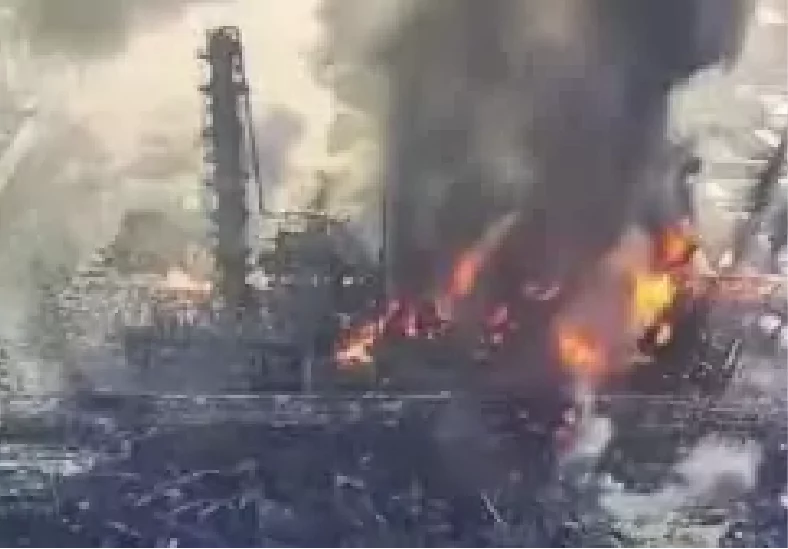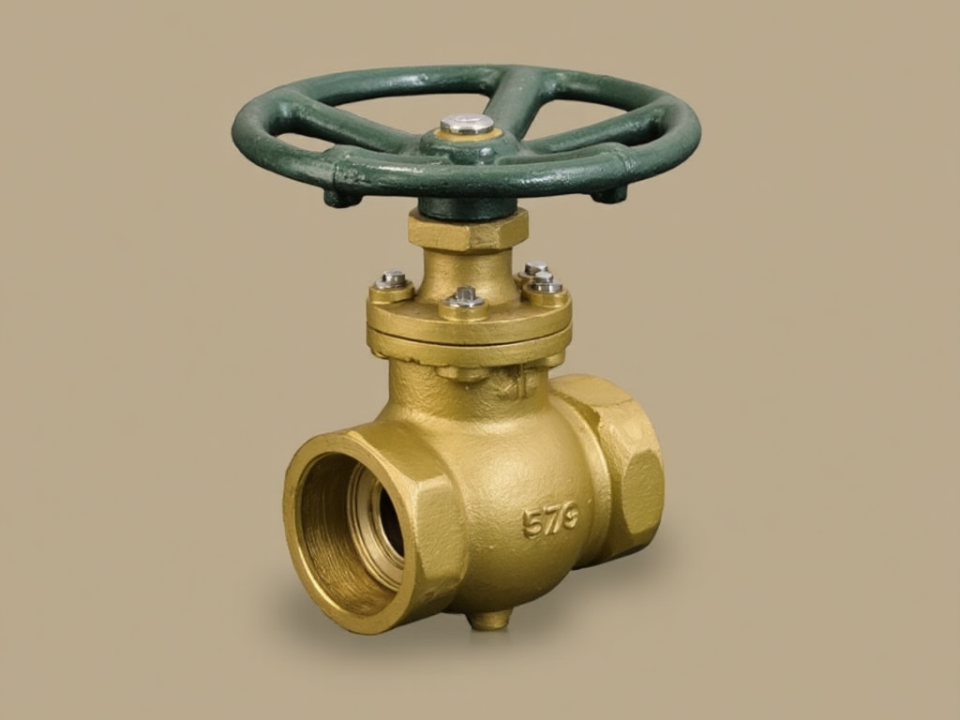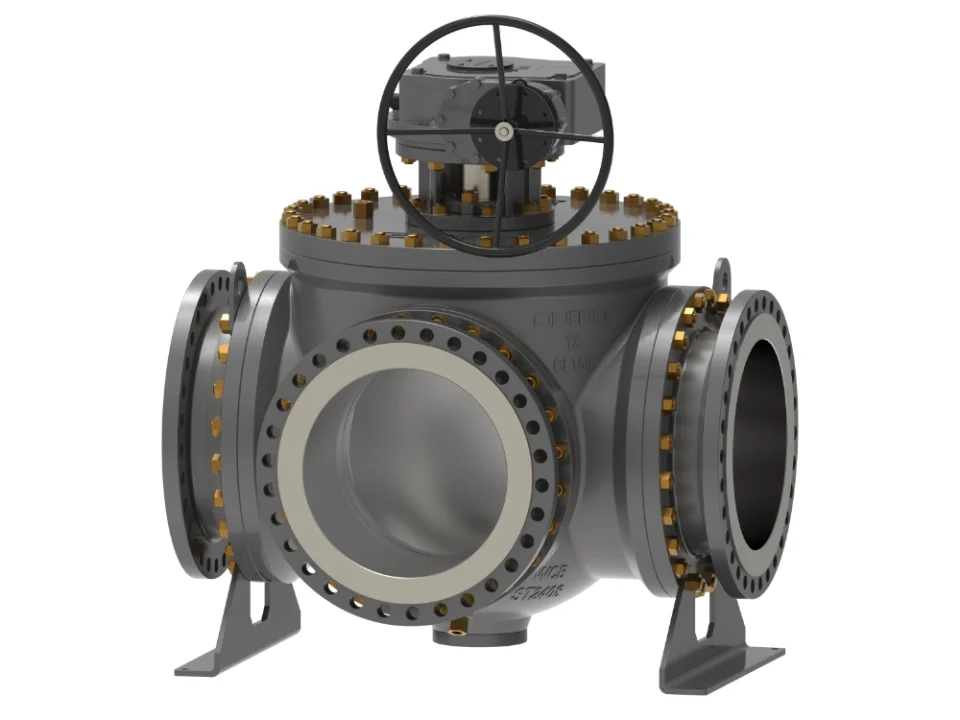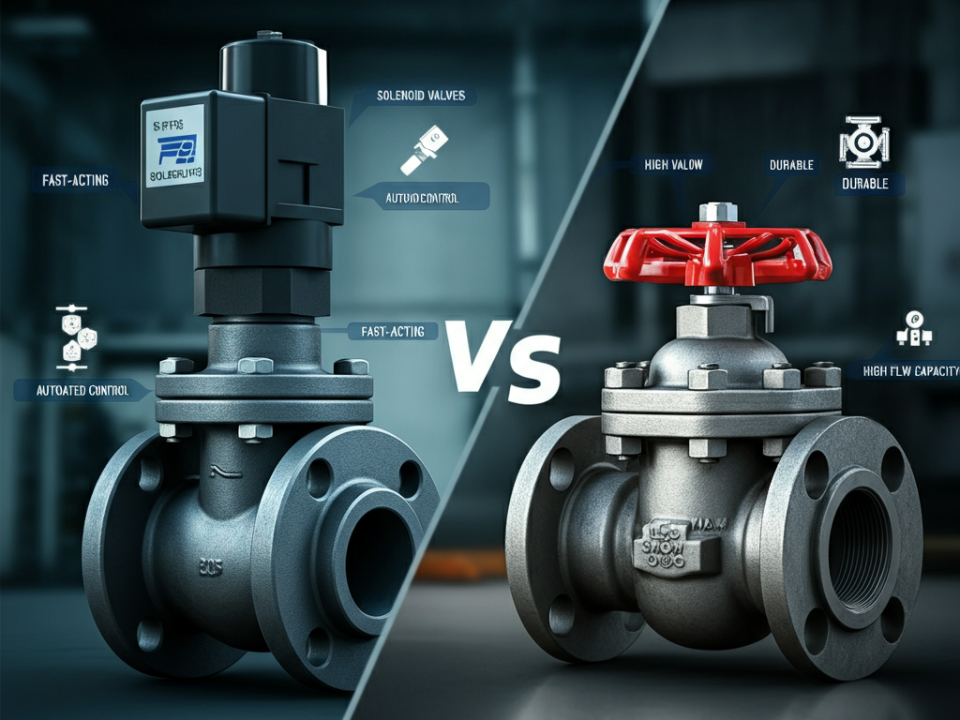In industries like oil, gas, and chemicals, safety is a top priority. These fields handle flammable and hazardous materials every day. Fire-safe equipment, like industrial ball valves, is essential to keep operations safe.
Fire-safe industrial ball valves are designed to prevent the spread of fire by stopping leaks. They keep flammable fluids from escaping in the event of a fire.
In this article, we’ll explore what makes a ball valve “fire-safe.” We’ll also discuss how different manufacturers approach this critical feature.
What is a Fire-Safe Industrial Ball Valve?
What’s a fire-safe industrial ball valve? A fire-safe industrial ball valve is a type of industrial valve made to withstand high temperatures. When exposed to fire, these valves seal tightly to prevent leaks. This safety feature is especially important in systems that handle flammable or explosive materials.
Most industrial ball valves rely on soft seals, often made from materials like Teflon, for their primary seal. These soft seals create a tight closure under normal conditions but can melt or fail in extreme heat. Fire-safe valves add an extra layer of protection by using a secondary metal seal that activates if the soft seal fails.
The metal-to-metal seal is durable and can handle extreme heat. This feature prevents flammable fluids from escaping and feeding the fire. FFire-safe valves are essential in industries with high fire risks. That’s because they limit damage and help control hazardous situations.
Fire-safe valves must pass strict testing before they are certified. Testing ensures that the valve can function correctly under fire conditions. These standards give users confidence that the valve will work in an emergency.

Want a Fire-Safe Industrial Ball Valve?
Different Fire-Safe Ball Valve Designs Across Manufacturers
Manufacturers have developed various designs to make their valves fire-safe. All fire-safe valves aim to prevent leaks during a fire. But each manufacturer may use different methods and materials to achieve this.
| Feature | What It Does | Why It’s Important |
| Dual Sealing Systems | Soft seal for normal use, metal seal for fire. | Keeps the valve closed during a fire. |
| Fire-Resistant Materials | Made with strong metals like stainless steel or graphite. | Withstands high heat without breaking down. |
| Anti-Static Devices | Stops static electricity from causing sparks. | Prevents sparks from igniting flammable materials. |
| Automatic Shut-Off | Closes the valve automatically when a fire happens. | Stops the flow right away to prevent further damage. |
| Testing Standards | Tested to fire safety standards like API 607 or API 6FA. | Ensures the valve works safely during a fire. |
Dual Sealing Systems
One common feature in fire-safe ball valves is the dual sealing system. This design includes both a soft seal for regular operation and a metal seal for emergencies. If the soft seal is destroyed by fire, the metal seal takes over, ensuring that the valve remains closed.
This dual-sealing design is widely used because it’s simple and effective. The soft seal provides a secure closure under normal conditions. But if exposed to fire, the metal seal takes over, making sure the valve remains safe and leak-proof.
Fire-Resistant Materials
The materials used in fire-safe valves are carefully selected for durability and heat resistance. Common materials include stainless steel and other high-strength alloys. These metals can withstand high temperatures without deforming or breaking down.
Some manufacturers also use graphite seals, which can handle extreme heat. Graphite is highly resistant to fire, so it maintains its shape and seal under high temperatures. This material is often used for high-risk applications, as it offers an extra level of safety.
Anti-Static Devices
In addition to fire resistance, some fire-safe valves have anti-static devices. These devices prevent static electricity, which can create sparks. A spark could ignite flammable fluids. This means anti-static features are essential in hazardous environments.
Anti-static devices work by grounding the valve, preventing the buildup of static electricity. This feature is particularly useful in settings where flammable gases or liquids are common. By preventing sparks, anti-static devices add an extra layer of safety.
Automatic Shut-Off Features
Some fire-safe ball valves are equipped with an automatic shut-off feature. If a fire triggers the valve, it closes automatically without needing manual control. This feature is valuable in high-risk areas, as it stops the flow immediately.
Automatic shut-off valves are often used in remote or unmanned locations. If a fire breaks out, these valves activate on their own, providing immediate protection. This reduces the chance of leaks and prevents further damage from spreading.
Testing Standards
Fire-safe ball valves must meet specific standards before they are certified. Many manufacturers test their valves to API 607 or API 6FA standards. These tests simulate fire conditions to check that the valve can hold up under extreme heat.
API 607 tests include exposing the valve to fire for a set time, checking for leaks, and ensuring the valve remains functional. Passing these tests means the valve can be trusted to work in a fire. Testing standards give customers confidence that their fire-safe valves will perform as needed.
What is Onero’s Solution for Fire-Safe Design Industrial Ball Valves?
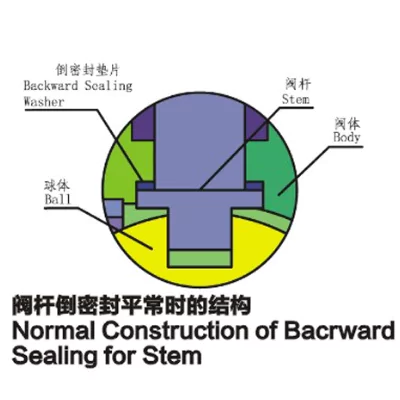
Normal Design Industrial Ball Valves
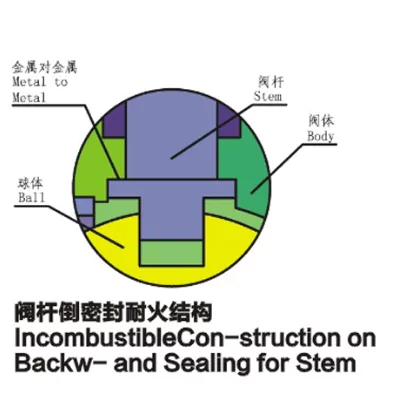
Fire-Safe Design Industrial Ball Valves
ONERO makes fire-safe industrial ball valves that are strong and dependable. These valves are built to handle high temperatures. They keep working safely even in extreme conditions.
One key feature of our fire-safe design is the dual sealing system. Under normal conditions, a soft seal provides a tight, leak-free closure. If the valve is exposed to fire and the soft seal fails, a metal-to-metal seal takes over. This second seal keeps the valve securely closed.
We use strong, fire-resistant materials in its fire-safe valves. We choose materials like stainless steel. Stainless can handle very high temperatures without losing strength. This choice of material ensures that our valves remain stable and reliable even under severe heat.
Our fire-safe industrial valves have anti-static devices. These devices stop sparks from forming. This helps prevent flammable fluids from catching fire. This feature adds an extra layer of safety, especially in settings with explosive materials. With anti-static devices, our valves are safer and better suited for high-risk environments.
Our fire-safe valves undergoes rigorous testing to meet international standards, including API 607. Our commitment to safety and quality ensures that every valve will perform reliably in emergencies. If you focus on safety, ONERO’s fire-safe industrial ball valves provide a dependable solution.
To learn more about ONERO’s fire-safe ball valves, visit our product page. Our valves are designed to meet a range of needs, offering durability, safety, and peace of mind.
Conclusion
Fire-safe industrial ball valves are essential for controlling fire risks in hazardous industries. They are designed to prevent leaks, even when exposed to extreme heat. This feature helps contain fires and reduce the spread of damage.
Different manufacturers use various designs to make valves fire-safe. Our fire-safe ball valves have dual seals. They are also fire-resistant and have anti-static devices for added protection.
Our fire-safe ball valves have dual seals. They are made with fire-resistant materials. They also include anti-static devices for extra protection.
To explore our range and find the right solution for your needs, visit our website or contact us today.

